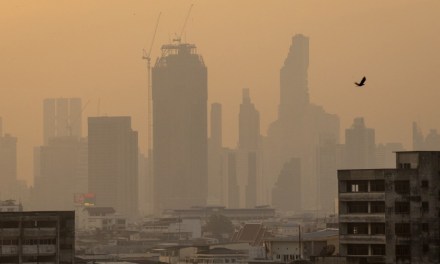Climate change is a growing problem that the world is facing today. While we often attribute its effects to natural disasters such as storms and floods, there is a lesser-known aspect that is just as destructive: underground climate change. A recent study conducted in Chicago reveals that this phenomenon is causing the ground beneath the city to deform, putting buildings and infrastructure at risk.
“The denser the city, the more intense is underground climate change,” said lead study author Alessandro Rotta Loria, an assistant professor of civil and environmental engineering at Northwestern University in Evanston, Illinois.
“Deformations caused by underground climate change are relatively small in magnitude, but they continuously develop,” he said. “Over time, they can become very significant for the operational performance of civil infrastructure like building foundations, water retaining walls, tunnels and so on.”
The study, published in the journal Communications Engineering, utilized 150 temperature sensors installed in the city’s Loop district. These sensors were placed both above and below ground and in various places, including basements, tunnels, and parking garages. The data collected was then compared to a control area, Grant Park, which had no excess heat coming from construction or transportation.
The study found that the heat generated from buildings, transport systems, and other human activity is causing the ground to expand. The researchers also discovered that the problem is worsened by the fact that underground temperatures do not fluctuate as quickly as surface temperatures. This means that the ground has less time to cool off and hence is more prone to expanding over time.
“We found underground structures, such as basements, where the air temperature was very high,” Rotta Loria said. “And the consequence of that is that at least a portion of the heat will diffuse towards the ground over time, and that’s the origin of the phenomenon.”
“There is what I call a silent hazard,” Rotta Loria said. “Buildings that are more prone to issues, because they were designed and built with outdated approaches, are also those that contribute the most to underground climate change, because they lack appropriate thermal insulation and therefore inject the most heat into the ground.”
The deformation caused by underground climate change can manifest in various ways. For example, cracks can start to appear in the foundation of buildings, leading to structural damage. Similarly, pipes and other infrastructure can become distorted, resulting in leaks and other issues. The problem is particularly severe in urban areas with lots of tall buildings and other infrastructure.
While the study focused on Chicago, underground climate change is a problem that is prevalent in many other cities around the world. As more and more people move into cities, the problem is likely to become even more severe. However, there are steps that can be taken to mitigate the problem. For example, using lighter and more reflective materials in construction can help reduce the amount of heat that is absorbed by buildings.
Underground climate change is an issue that is not often discussed, yet it has the potential to cause significant damage to cities around the world. The study conducted in Chicago is just the tip of the iceberg; there is still much to be learned about this phenomenon and its effects on infrastructure. However, it is clear that action needs to be taken to prevent the problem from worsening. By implementing sustainable building practices and reducing the amount of excess heat generated in cities, we can help mitigate the effects of underground climate change and protect our cities for future generations.






